
Monday January 27, 2014
It’s Restaurant Week!! Learn about Alexandria’s magnet restaurants and what they mean to our city’s regional and national appeal.
In recent years, the reputation of Washington’s restaurant scene has soared nationally. Not coincidentally, more Alexandria restaurants are climbing the list of DC’s top dining venues. Our celebration of Alexandria’s dining scene features Chef Cathal Armstrong – one of the best-known chefs in the culinary industry, exhibiting great culinary command creativitiy, technique, presentation, and even business. He will share his vision – including why he chose Alexandria as the base for his growing gastronomic empire. Alexandria-based food writer Jordan Wright will talk about Alexandria’s rising stature in the DC dining scene and share tips on places you should know about. Claire Mouledoux of the Alexandria Convention and Visitors Association (the organization that gives us “Restaurant Week”) will explain how this dining renaissance benefits our city.
|
| FEATURED SPEAKERS |
 Star Chef Cathal Armstrong Star Chef Cathal Armstrong |
Irish chef Cathal Armstrong’s cuisine and philosophy reflect ideas planted in the atypical Dublin household of his childhood, where garlic was used fearlessly and fruits and vegetables were grown in the garden. The family’s travel business launched Armstrong into a myriad of different countries, cultures and cuisines where he began to develop an appreciation for gastronomy in the differing landscapes of Europe. As the family traveled, Armstrong was educated in the languages he now speaks fluently: English, French, Spanish, German and Irish. For those not versed in the Dubliner’s native language, the “t” in Cathal is silent.
At the age of seven, Armstrong began his annual student exchange in France with the Boudain family. His food curriculum involved visiting truffle-farms and vineyards, eating peasant-style food and picking fruits and vegetables on the farm. These early culinary experiences inspired Armstrong’s philosophy. He is committed to sourcing locally, valuing animals and respecting the land, so much so that Armstrong cites innovative farmer David Lankford of Davon Crest Farms in Maryland as one of his biggest inspirations. Armstrong is now an active member of The American Farmland Trust, a non-profit organization dedicated to preserving and protecting the nation’s agricultural resources.
At the age of 20, Armstrong opened a fine dining restaurant in the Dublin suburbs with two partners. After a two-year tenure atThe Baytree, Armstrong decided to move to Washington DC where for the next 11 years he moved his way through various top kitchens learning the fundamentals from mentors including Greg Mitchell of New Heightsand Jeffrey Buben of Bistro Bis. It was during his time spent at Gabriel under Gregory Hill that Armstrong met his future wife and business partner Meshelle Armstrong. Together, they dreamed of a place where they could balance a commitment to farmers with their vision of fine dining.
The Armstrongs found it in Alexandria, where in April 2004, 13 years after first arriving in DC, they opened Restaurant Eve. The modern American restaurant (with French, Spanish and Irish influences) showcased Armstrong’s playful personal style and deep-rooted commitment to purveyors. In the summer of 2006, Armstrong openedEamonn’s A Dublin Chipper and PX, or The PX, a cocktail-driven speakeasy lounge five blocks from Restaurant Eve. Both venues are named for Armstrong’s children, Eve and Eamonn. Armstrong has since been inducted into the Share Our Strength Leadership Council, a group of culinary notables from around the country who advise this non-profit dedicated to eradicating childhood hunger in the U.S. Armstrong’s self-described “pork fetish” and the Irish roots at the base of his culinary experience are showcased in decadent but playful dishes like “Bacon, Egg, and Cheese.” The dish makes full use of the versatility of pork fat with a cured and braised pork belly, seared to order, a tender crepe with ham and leeks, and a rich golden cheddar foam.
|

Claire Mouledoux
Alexandria Convention & Visitors Association |
Claire is the Director of Communications for ACVA, Alexandria’s nonprofit tourism marketing organization, which contributes to the economic vitality of the city. Each year $738 million in visitor spending generates $23.7 million in tax revenue, providing needed city services and helping to support the community’s many small businesses. Claire directs the overall message and voice of the Alexandria visitor brand by managing ACVA’s communications strategies and guiding a team of professionals in media relations, social media and digital marketing. An Old Town resident with a passion for the city, she has been promoting the allure of Alexandria’s remarkable dining, shopping, arts and history for nearly four years as part of the ACVA team. Formerly the Director of Communications for the Torpedo Factory Art Center, she currently serves on the advisory board of The Art League and is an active member of the Mid-Atlantic Tourism Public Relations Alliance.VisitAlexandriaVA.com
|
 Jordan Wright Jordan Wright
Whisk & Quill |
Jordan Wright is an accomplished writer on food, spirits, travel, and theatre. Her clients have included the tony Georgetowner and hip sister publication the Downtowner, the Washington Examiner and San Francisco Examiner, as well as LocalKicks.com, DC Metro Magazine, Washington Life Magazine, Washingtonian Magazine, MDTheatreGuide.com, Indian Country Today On-Line and Print Publications, The Alexandria Times, Hartkeisonline.com, and now DCMetroTheaterArts. Her articles feature restaurant openings, food and wine events, food-oriented film reviews, food trends, restaurant reviews, food memories, new food products, hotels, spas, resorts and interviews with the country’s leading chefs – from Jose Andres and Top Chef’s Carla Hall, to CakeLove’s Warren Brown and Top Chef’s Spike Mendelsohn. She has also interviewed famed chef and TV star, Anthony Bourdain, Eric Ripert, cookbook author Joan Nathan, and director Robert Kenner for an in-depth article about his film Food, Inc. |
Program
Co-Chairs: |
Alan Dubow, Shari Bolouri, Terri Hauser andMichael Hobbs
|
|
All programs are held at:
Holiday Inn Eisenhower Metro Center – 2460 Eisenhower Avenue CLICK HERE for directions
Reception at 6:15 p.m. (Cash Bar) Buffet Dinner at 6:45 p.m.
| MEMBER PRICE |
NON-MEMBER PRICE |
SAVE BY PLANNING |
| $28 |
$33 |
with reservations made by 5:00 pm on the Friday prior to each meeting |
| $35 |
$40 |
for late reservations and walk-ins |
Program only 7:15 p.m. (free to members/$5 non-members) – Presentations are followed by a question and answer session based on written questions from the audience. Programs end promptly at 9 P.M.
Dinner reservations strongly encouraged. Seating is not guaranteed for walk-ins. CLICK HERE TO RESERVE YOUR SPACE
Agenda:Alexandria, a non-partisan, non-profit organization which began in 1998, sponsors eight dinner meetings a year with presentations on topics of interest to Alexandrians. Membership is only $35 a year and open to anyone, whether or not you live or work in Alexandria. Topics are wide-ranging and past topics have included such issues as transportation, education, the arts, public safety, history and preservation, public health, the City budget, the waterfront, the environment and aging in Alexandria.
Moon Bay Coastal Cuisine and Old Hickory Steakhouse
Jordan Wright
February 2010
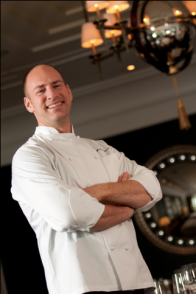 Chef Michael Harr - photo courtesy of the Gaylord National Resort and Convention Center Chef Michael Harr’s return to the DC area has landed him at the Gaylord National’s Resort and Convention Center to helm both the Old Hickory Steakhouse and Moon Bay Coastal Cuisine. Thrilled to have a chef with such star quality, the hotel takes a decidedly different turn in offering diners a more innovative and chef-driven dining opportunity.
Locals know the Gaithersburg-raised Harr from turns at the Watergate’s Jean-Louis, where the cooking bug bit him, Butterfield 9, the greatly adored and sadly missed DC restaurant, where he made his mark with his beautifully created and unique offerings, and at the former five-diamond Maestro Restaurant, where he worked alongside famed chef, Fabio Trabocchi.
Harr has held stages in France at a number of prestigious restaurants working with other noted chefs, Alain Ducasse and Guy Savoy. In Las Vegas he was Sous Chef to Jacques Vanstaden at the famed London Club, later worked in Montreal, New York and Miami as Executive Chef at Zodiac.
Old Hickory, which I reviewed last year, is a sophisticated steakhouse. It has an après dinner cigar deck, their very own artisanal cheese cave and one of the most beautiful dining rooms ever designed…a stunning Charleston-inspired setting with gorgeous views of the Potomac River.
Moon Bay, also reviewed here last year, feels like a coastal retreat, with a babbling brook flowing beside its deck, it, too, overlooks the Potomac. Surrounded by a lush tropical forest, it features creative seafood dishes. Harr’s French-trained background is an impressive new direction for these two top-drawer destinations.
In an exclusive first time interview with Whisk and Quill, Harr shares his vision for his latest adventure.
Jordan Wright – As an iconoclastic chef with classical traditions how will your style translate to accommodate two distinctly different restaurants…Old Hickory Steakhouse and Moon Bay Coastal Cuisine?
Michael Harr – As a culinary professional, it is important to appreciate many aspects of cuisine and the use of products available to us with every season. In this case, we have seafood and meats as the main focus. This amazing opportunity will allow me to focus on foods that I am passionate about. Such as local East Coast seafood as well as sourcing seafood items that wouldn’t normally be found on a general seafood restaurant menu.
For Moonbay, I envision it as being an adventurous outlet with the freshest of seafood as it’s main focus. My objective with the food is sustainably sourced, seasonality and driving personality…and keeping it simple and approachable.
For Old Hickory, I plan to incorporate classic approaches as well as “new-age” items with a modern twist. We hope to share our concepts to a clientele that can be adventurous and enjoy creativity within a steakhouse setting. Old Hickory is a gorgeous restaurant with an outstanding service. I’ve dined in many steak houses and Old Hickory stands out as an attractive destination that sets itself apart from the rest.
I would like to introduce seasonally inspired food items with creative choices for our composed plates. We are a steakhouse so our focus will be to offer great quality steak dishes, but I’m looking forward to incorporating some very interesting twists like “Chocolate Elk” (a dish that became my signature and gained notoriety at one of my previous restaurants) among others. My vision for Old Hickory is to make it one of the Capital region’s newly appointed destination restaurants that everyone must experience.
JW – How will you interpret your training in haute cuisine for the both restaurants?
MH – I have a very ambitious approach to our cuisine at the Gaylord National, with important goals to accomplish along with our executive leadership. My initial focus will be to bring the best local ingredients to our clients while enhancing overall food quality.
We currently have corporate contracts and, once they are approved for local sourcing, I will be able to develop a seasonal program that allows me to design creative and fun menus with local products. I believe “haute” is about quality, passion and foundation… in this way I am able to be successful in my mission to create the best for the clientele.
JW – What menu changes and local sourcing do you have in mind? When will the menu reflect these changes?
MH – I believe that all menus should be seasonal. Local sourcing can be significant with the amount of business that we produce. If we support the local farmers, we demonstrate our support for agriculture, renewable resources and local community.
In regards to menu changes, that’s a good question. We have to consider that we are in a corporate environment so there are many processes that must be followed. We will gradually implement the changes as we provide comprehensive training to our staff.
JW – Will you be using only sustainable seafood and from what sources?
MH – Yes, I would like to obtain sustainable resources as much as possible. As a local DC chef, I have many sources that I have used throughout the years. I will continue to use my vendors to source amazing seafood products.
JW – Who have you brought with you to execute your vision?
MH – We are currently evaluating our organizational structure, and we will strategically allocate our talent to improve operations.
This interview was conducted, condensed and edited by Jordan Wright.
DC and Alexandria residents can get to National Harbor by taking the Metro to King Street where a Gaylord Hotel bus shuttle at the entrance to the station runs every 30 minutes from 10AM till 10PM direct to National Harbor for $5.00 each way.
Ferry service from the Georgetown and Old Town Alexandria docks to National Harbor resumes in March. For more information visit:
www.PotomacRiverboatCo.com
www.GaylordHotels.com/gaylord-national/ and click on transportation.
For questions or comments about this article contact [email protected].
Jordan Wright
The Georgetowner and Downtowner
November 2009
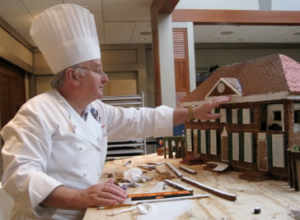 Chef Mesnier with his gingerbread house - photo credit Jordan Wright “And had I but one penny in the world, thou should’st have it to buy gingerbread.”
So penned Shakespeare in Love’s Labours Lost back in the holly jolly days of the 16th Century. But a pretty penny indeed it would cost him when the heady and alluring cardamom, nutmeg, cinnamon, and allspice used to make gingerbread were far less affordable and available to the masses than they are today.
But it wasn’t until its first publishing on December 20, 1812, when Die Gebruders Grimm spun their fable of Hansel and Gretel with its lure of candy cottages in the Bavarian forest that gingerbread houses began to emerge as a symbol for Christmas.
From the Black Forest of Germany to within ten miles of The White House there lies another famous colonial white house with an older provenance—George Washington’s beloved Mount Vernon, an especially enchanting destination over the Christmas holidays.
When I arrived last week I met up with Roland Mesnier, formerly the White House Pastry Chef for 25 years. Chef Mesnier, the uber sweetsmeister and cookbook author who launched the first pastry course at L’Academie de la Cuisine in Bethesda, Maryland, has been called upon to craft a gingerbread replica of Mount Vernon in perfect detail. Chef Mesnier employed the same level of perfection to this house as he did as The White House Pastry Chef. “The White House was a big production place. Everything should be the very best. If it’s not the best at The White House where else is it going to be the best!” exclaims Chef Mesnier.
The grounds of this gingerbread house features the estate’s farmyard animals, a tree with an American eagle roosting in it, and the iconic dove of peace weathervane—even George and Martha decked out in Colonial attire—all chiseled out of marzipan. Here are some fascinating facts about the Mount Vernon gingerbread house replica:
The 5 x 8 foot replica began last month. 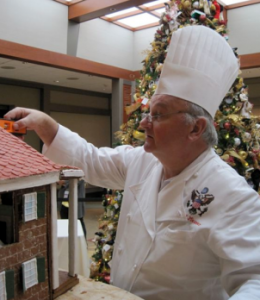 Chef Mesnier checks the angles of his gingerbread house at Mount Vernon - photo credit Jordan Wright It took 325 pounds of gingerbread and 70 pounds of chocolate to glue the house together. A full pan of gingerbread is baked and cut, after it cools, according to a pattern.
“Equatorial Noir” chocolate from Valrhona with 55 percent of cocoa solids is employed. Every piece of gingerbread is slathered with melted chocolate over its interior side using an offset spatula. This gives it strength.
To achieve a perfect edge-to-edge fit an industrial band saw is used to cut the gingerbread. In any event, the vagaries of humidity can change the properties of the gingerbread causing it to shrink. “There are so many simple things that can totally change the outcome of your dessert,” he offers. (Sound of forehead slap here.)
No interior support system is employed. No cardboard or underpinnings are utilized whatsoever.
Marzipan roof shingles are first tinted terra cotta and flattened with a rolling pin, then cut with a cookie cutter into small circles. Modeling marzipan is used.
Shredded phyllo dough is used to replicate straw.
Handyman’s tools are de rigeur. A level is used to check the slant of the edges.
The gingerbread is made from scratch using the finest ingredients: flour, butter, eggs, baking powder, honey, ginger, molasses, cloves, and cinnamon. (Long ago rosewater and ground almonds were sometimes added. My tasting determined Mesnier’s gingerbread to be divinely delicious—especially with the chocolate backing.) He exclaims, “If I have to use anything less, I’m not doing it!”
Marlene Roudevush, his former White House assistant pastry chef, assisting him with the Mount Vernon gingerbread house replica, creates her figures using Confiseur D’Or Swiss modeling marzipan and applies the royal icing to the house. For that she uses a pastry bag made out of parchment paper with a little hole nipped out by scissors. “We always make our own, ” she asserts. Her research tells her that President Washington bred American Foxhounds and was fond of camels. Martha also claimed a parrot as a favored pet. All of which Chef Roudevush will add to the menagerie.
Many years ago I designed a gingerbread house for Grandma’s House for a fundraising auction in advance of a gala at the Four Seasons Georgetown. There were twenty or so entrants, the preponderance of them, architects. I decided upon Noah’s Ark, replete with wildlife duos and gummy fish aswim in the surrounding sea. Arriving with my humble ark, I saw gingerbread houses featuring minutely detailed colonial buildings with mullions and cobweb windows that could have been registered with the National Trust for Historic Preservation. It seems my cohorts had chosen a more traditional route.
But it was all about the attempt, I reckoned, and moreover, I learned that gingerbread shrinks…a lot…and buckles with the heat of baking, and no amount of royal icing can cure that. I had a few unresolved personal baking queries for the President of Pastry, and I wanted them on the down low. Monsieur Mesnier was only too delighted to oblige.
I collected a few pearls of pastry wisdom from the master:
“My philosophy on baking is very simple. Measure everything the night before and leave it out on your kitchen counter, even the eggs and the butter. The next morning you will mix your cake in a few minutes because everything is the same temperature, and it will be the best blending you ever had in your life.”
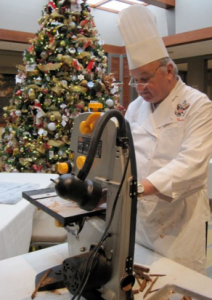 Chef Mesnier cuts the gingerbread with a band saw - photo credit Jordan Wright “A lot of chefs love to complicate their recipes with unnecessary instructions. Half of it you can throw out. They just put it in there because the more complicated it is the more they think they look like geniuses!”
“So many chefs use all these gimmicks to try to make it seem good. What I have done in my books is simplify the language.”
“Buy the best ginger you can buy and check out the strength. You have to watch out because even from year to year it may change in strength. Make a sample of dough, bake it, and test it. There are so many different kinds of ginger and each type makes a difference in the outcome.”
“If you make enough dough in advance you can roll the cookies out and cut them and freeze them raw. Then, without defrosting, you can bake them off and eat them fresh that day.”
“We made 120,000 pieces of cakes and cookies for Christmas in The White House. Most of our cookies were shaped and frozen raw, and later taken out and baked.”
“We had such a small kitchen and very little staff. We started baking for Christmas in the White House in June. We made half a ton of fruitcake, orange cake, chocolate cake, German stollen and applesauce cake, Italian panettone, and yule logs, too. Our Christmas was based on Old World Christmases, like my Bananas in Raspberry Cream (Dessert University, Roland Mesnier, Simon and Schuster 2004). “People would hunt me down for that recipe.”
“We had a lot of diplomats over the holidays and I wanted them to find their own cakes and cookies from home on the table. We wanted to please as many people as we could. That’s the key…to have that special something for everyone.”
Like families today, the Washingtons were not strangers to the tragedies of war, death, and illness, even over the holiday season. In those days, a trip to rendezvous with loved ones could last days, or even weeks, over rugged hills and rutted roads, and might result in a stay of a fortnight or longer. So it was all the more imperative to celebrate the homecoming of family members and friends from afar. Therefore all hands were pressed into service to welcome the guests. You will find that the Mount Vernon of today reflects the warmth and spirit that emanates from the venerable estate.
Chef Mesnier’s gingerbread house will be on display all day at Mount Vernon throughout the Christmas season. You will need to call ahead for tickets for evening tours.
www.chefrolandmesnier.com
www.mountvernon.org
www.grandmashouse.org
For questions or comments on this article contact [email protected] or visit www.whiskandquill.com .
Jordan Wright
Georgetowner/Downtowner
November 2009
 The rare white rhino from MSNBC's 100 Heartbeats Setting the stage for extinction: Every twenty minutes a distinct species of plant or animal throughout the world becomes extinct.
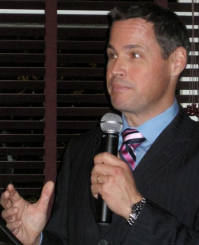 Jeff Corwin speaks about his new book and MSNBC special 100 Heartbeats - photo credit Jordan Wright There is an aura surrounding Jeff Corwin. It is the peaceful intent of a man who has witnessed fierce struggle, mortal threats, man’s inhumanity, heart-pounding danger and crushing heartbreak and emerged to dedicate his life to saving the planet’s rare and endangered species. This is not your son or daughter’s jocular Animal Planet guide tiptoeing through the friendly jungles with weird and eclectic animals, nor the boyish rake abandoning all sensibility to get just a bit too close to an unpredictable viper. This is a man committed through thought, word and deed to altering the predicted fate of our planet’s endangered animals. In my encounter with Corwin I could read the intensity and conviction on his face as he spoke of his up-close-and-personal encounters with the cheetahs and white rhinos whose days appear numbered.
100 Heartbeats – The Race to Save Earth’s Most Endangered Species is Corwin’s paean to the animals. He has found a powerful voice after 15 years of television as an Emmy-award winning producer and host of over a dozen television series for Discovery, Disney, the Food Network, NBC, CNN and the Travel Channel. The two-hour special on the book’s subject is the second program in MSNBC’s epic Future Earth series scheduled for launch this week on November 22nd.
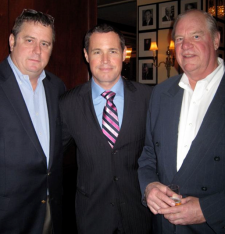 Chef Robert Wiedmaier, Jeff Corwin and Prime Seafood's Jim Chambers - photo credit Jordan Wright In honor of sustainability the book launch at the Occidental Grill showcased a number of wines that foster sustainable and environmentally responsible practices. Naked by Snoqualmie vineyards, Ste Michelle and Yealands of New Zealand, noted DC Chef Robert Wiedmaier gave their sauvignon blanc the nod. Wild-caught Coho salmon and wild Georgia white shrimp from Prime Seafood, and heritage beef and turkey from Ayrshire Farm in Upperville, VA became luscious hors d’oeuvres in the creative hands of Chefs Rodney Scruggs and Robert Townsend.
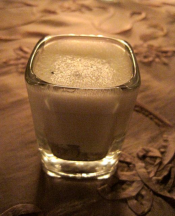 Sustainably-raised oyster stew shooter created for the evening by Chef Rodney Scruggs - photo credit Jordan Wright I had an opportunity to speak with Jim Chambers, manager and owner of Prime Seafood of Kensington, MD who as a marine biologist spent 20 years with the government agency, National Marine Fisheries Service (NMFS). While on the board of the Marine Stewardship Council he was instrumental in setting up the standards for the industry. Jim is the only wholesaler in our area selling exclusively sustainably raised seafood to select local restaurants. Poste, 701, Proof, Johnny’s Half Shell, Corduroy, Firefly, Restaurant Nora, Cashion’s Eat Place and the Occidental Grill and Seafood are some of his DC clientele.
From April through December he sells wreckfish that is similar in flavor and texture to grouper, but sustainable through controlled fishing. Only four boats are licensed to capture these fish off the coast of Charleston, SC in deep water at the base of a “wrecked” submarine wall.
Chambers really enjoys way the fish is being prepared sous-vide at Blue Duck Tavern. “They cook it low and slow in a vacuum-sealed pouch and finish it off with a quick browning. It’s so delicious…tender and succulent, ” he said.
 New Zealand's Yealands Sauvignon blanc - photo credit Jordan Wright Science Magazine recently reported that, if we keep destroying habitat, the world’s fisheries will collapse by 2048. “With unrestrained overfishing we are racing pell-mell towards the destruction of our seas. We now catch the top predators, bottom predators and everything in between with massive fishing trawlers equipped with huge drag nets and sophisticated electronics such as sonar and GPS,” Chambers warned. “We are fast working our way through what is left.”
We talked about the interdependency of the species…how the little fish sustain the bigger fish and how bottom-dragging nets take out 100% of the herring leaving the predator tuna without sustenance and faced with extinction along with their tiny friends.
Our conversation then turned to the darker side of farm-raised fisheries. A recent study concerning farm-raised salmon vs. Chilean vs. Scottish salmon sold in US supermarkets, compared their contaminant load…the amount of chemicals measured in the fish. All of them rated poorly.
“Fish are fed with other fish containing PCBs, DDT, and other organic toxic compounds. In fact only one meal per month of farm-raised salmon, often misleadingly labeled organic, poses a substantial cancer threat to the consumer. They receive growth hormones to make them grow faster while being constantly doused with chemicals to keep the disease level manageably low,” he related.
“You’re creating a sewer in the water where they are being raised. And the parasites, like sea lice, that live on the outside of the nets are getting to the salmon in the net pens where they are being fed dyes to achieve the proper color,” Chambers told me.
This is the tragic underbelly of the fishing industry and a real eye-opener. “It takes about four pounds of juvenile species of wild fish to make one pound of farm-raised salmon. It’s totally unsustainable.”
Chambers takes heart with the appointment of NOAA’s new administrator, Jane Lubchenco, who is also in charge of the NMFS. As one of the most highly cited ecologists in the world, Lubchenco is considered a world expert on marine eco-systems.
Chambers suggests that, “Consumers and chefs in particular can become the solution by what they choose to eat and serve.” With the Blue Ocean Institute’s “Guide to Ocean Friendly Seafood”, a copy of which he graciously gave me, and will be my new seafood-buying bible, he hopes that those who enjoy fish will make better and more informed choices.
For more information visit these websites:
www.FutureEarth.MSNBC.com
www.PrimeSeafood.com
www.BlueOcean.org
www.MSC.org
www.ScienceMagazine.org
For questions and comments on this story contact me at [email protected] or visit www.whiskandquill.com .
By Jordan Wright
Since November’s election results were tallied, nearly every chef worth his or her salt has conjured up an inaugural dinner menu to commemorate President-elect Barack Obama’s historic move to the White House (Though as we go to press I can tell you that beloved former  Bush White House Executive Chef Cristeta Comerford will be staying on with the Obamas). Bush White House Executive Chef Cristeta Comerford will be staying on with the Obamas).
Still, most chefs would like the chance to cook at least one meal for our new President. There are those who have paid tribute to his Hawaiian roots, such as Chef John Zaner, flown in for the occasion, who is creating a Hawaiian-themed menu for Fyve Restaurant Lounge at the Ritz-Carlton Hotel in Pentagon City. Others have recognized (and tweaked new recipes in honor of) Obama’s love of chili, Chicago pizza and arugula.
All around town, cocktails are being shaken and stirred to the delight of our visitors on this momentous occasion.
Urbana offers a “Barack’s Fizz” made with cognac, Grand Marnier, maraschino liqueur, orange juice, muddled strawberries and topped with Domaine Carneros for that celebratory fizz.
By Jordan Wright
March 23, 2009
 After many hours, I managed to pluck every feather by hand and at last stared down at the lowly bird whose size and majesty had diminished substantially. My earliest foray into the preparation of game came quite unexpectedly a number of years ago. I was wintering on Long Island’s South Shore in an old farmhouse beside the sea. It was unseasonably temperate along the Montauk Peninsula with the seasonal thermal inversion created by the Atlantic’s proximity to the estuarine waters of the Napeague Bay.
I spent that hauntingly beautiful winter alone, save for four cats, and a golden retriever that appeared on my doorstep each morning and stayed with me during the daylight hours faithfully returning to his owner at night. He trotted beside me on my daily beach walks and on crisp afternoons spent at a nearby stable where he would wait in the barn while I exercised the horses with the stables’ owners. Continue reading A Pheasant Food Memory
|

 Star Chef Cathal Armstrong
Star Chef Cathal Armstrong
 Jordan Wright
Jordan Wright








 Bush White House Executive Chef Cristeta Comerford will be staying on with the Obamas).
Bush White House Executive Chef Cristeta Comerford will be staying on with the Obamas).